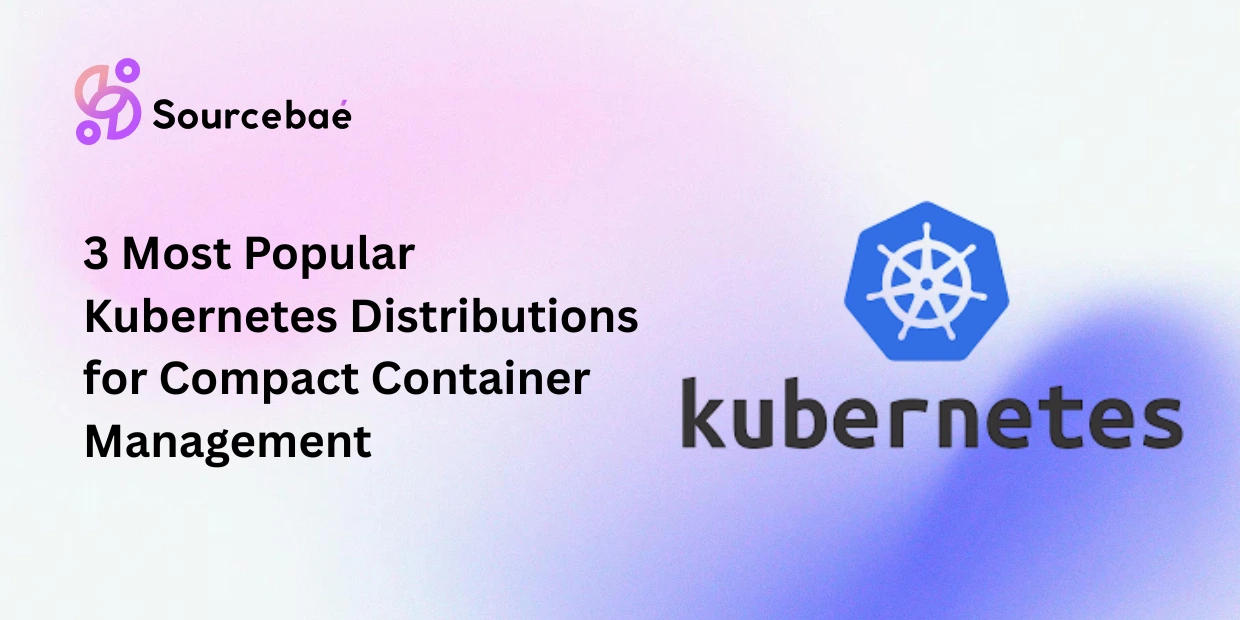As containerization gains momentum in the world of software development, Kubernetes has emerged as a leading platform for orchestrating and managing containers. Kubernetes distributions have evolved to cater to different needs, making it easier to deploy, scale, and manage containerized applications. In this article, we will delve into the three most popular Kubernetes distributions for compact container management. We will explore their features, advantages, and use cases, equipping you with the knowledge to select the right distribution for your specific requirement’s.
Red Hat OpenShift
Red Hat OpenShift is one of the most widely used Kubernetes distributions, backed by the industry-leading technology of Red Hat. It builds on Kubernetes and adds additional features, making it an excellent choice for organizations looking for a comprehensive container management platform.
About Red Hat OpenShift
OpenShift provides a powerful and developer-friendly experience, making it suitable for a wide range of use cases. It supports hybrid and multi-cloud environments, allowing seamless deployment across various cloud providers.
Key Features
- Developer-Centric Experience: OpenShift offers an intuitive user interface and developer tools to streamline the container development process.
- Security and Compliance: It comes with built-in security features, ensuring your containerized applications are protected from vulnerabilities.
- Operator Framework: OpenShift’s Operator Framework simplifies the management and scaling of applications through automation.
Use Cases
- Large-scale Enterprise Applications
- Cloud-Native Development
- Multi-Cloud Deployment
Google Kubernetes Engine (GKE)
Google Kubernetes Engine (GKE) is a managed Kubernetes service provided by Google Cloud. GKE offers a robust and fully managed environment, making it an ideal choice for organizations focused on leveraging the power of Kubernetes without the complexity of managing clusters.
About Google Kubernetes Engine (GKE)
GKE takes advantage of Google’s expertise in managing containerized applications at scale. It offers seamless integration with other Google Cloud services, making it a compelling choice for those already invested in the Google Cloud ecosystem.
Key Features
- Managed Kubernetes: GKE handles cluster management, updates, and scaling, allowing developers to concentrate on application development.
- Auto-scaling: GKE automatically adjusts the cluster size based on application demands, optimizing resource utilization.
- Google Cloud Integration: Tight integration with Google Cloud services like BigQuery, Pub/Sub, and Cloud Storage enhances the capabilities of GKE.
Use Cases
- Data-Intensive Applications
- Machine Learning Workloads
- Organizations using Google Cloud Platform
Amazon Elastic Kubernetes Service (EKS)
Amazon Elastic Kubernetes Service (EKS) is a managed Kubernetes offering from Amazon Web Services (AWS). EKS enables organizations to run Kubernetes on AWS infrastructure with ease, benefiting from AWS’s robust ecosystem.
About Amazon Elastic Kubernetes Service (EKS)
EKS provides a reliable and scalable Kubernetes environment, backed by AWS’s global infrastructure. It simplifies cluster management, making it a popular choice for enterprises looking for a managed Kubernetes solution.
Key Features
- Serverless Container Management: EKS integrates with AWS Fargate, allowing you to run containers without managing underlying infrastructure.
- High Availability: EKS ensures high availability and resilience through multiple availability zones.
- AWS Integration: EKS seamlessly integrates with other AWS services, facilitating seamless application development and deployment.
Use Cases
- Scalable Web Applications
- DevOps and CI/CD Pipelines
- Organizations heavily invested in AWS ecosystem
FAQs
What are Kubernetes distributions?
Kubernetes distributions are pre-packaged versions of Kubernetes that come with additional tools, features, and enhancements to simplify container management.
Are Kubernetes distributions suitable for small businesses?
Yes, Kubernetes distributions offer solutions for businesses of all sizes, including small and medium enterprises. Many distributions offer free or cost-effective plans to cater to smaller businesses’ needs.
Can I switch between Kubernetes distributions?
Switching between Kubernetes distributions may involve some effort, as each distribution may have its specific configurations. Planning the migration carefully and testing thoroughly before making the switch is advisable.
What is the difference between Kubernetes and OpenShift?
OpenShift is built on Kubernetes, adding additional features and developer-friendly tools to enhance the user experience. Kubernetes is the underlying container orchestration platform, while OpenShift is a Kubernetes distribution.
Which distribution is best for multi-cloud deployment?
Red Hat OpenShift and Google Kubernetes Engine
(GKE) are well-suited for multi-cloud deployments due to their support for various cloud providers.
Can I use my existing AWS infrastructure with Amazon EKS?
Yes, Amazon EKS allows you to utilize your existing AWS resources and integrates seamlessly with other AWS services.
Conclusion
In conclusion, selecting the right Kubernetes distribution is crucial for efficient and compact container management. Red Hat OpenShift, Google Kubernetes Engine (GKE), and Amazon Elastic Kubernetes Service (EKS) are among the most popular distributions, each catering to specific use cases and requirements. Whether you prioritize developer-friendliness, managed services, or integration with a specific cloud provider, there is a suitable Kubernetes distribution for your needs. Evaluate your organization’s goals and infrastructure, consider the features and benefits of each distribution, and make an informed decision that aligns with your container management strategy.
READ MORE: What Is Software Quality Assurance, and Why Is It Important?





